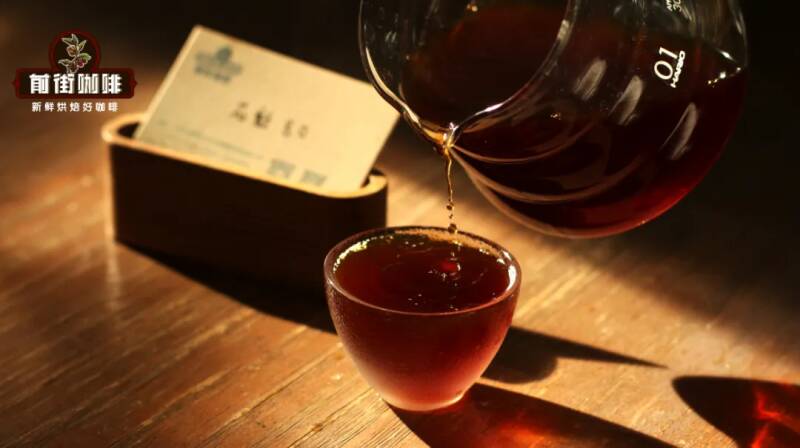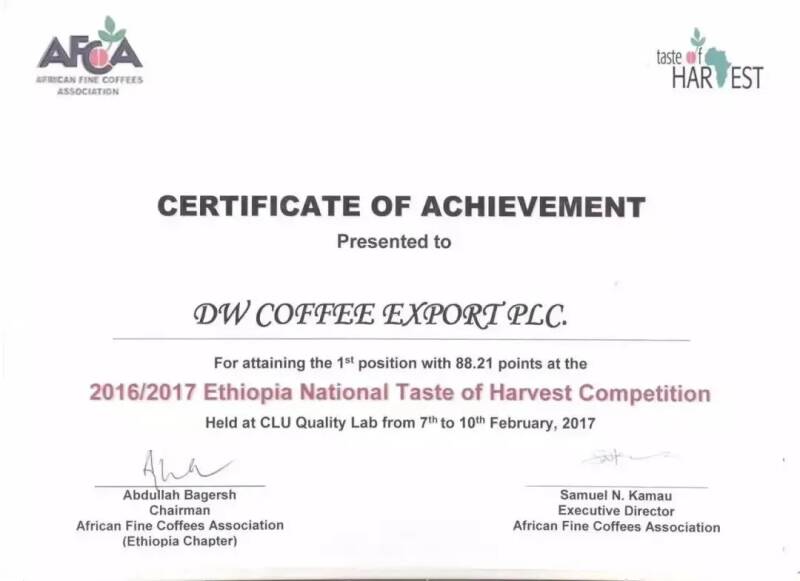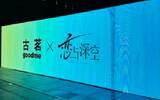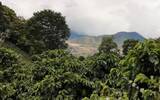What is Huakui Coffee? What is the difference between Huaquui 8.0 and 7.0? Is the flower queen the rose summer?
Sakuran, as one of the necessary rations for countless sour coffee lovers, has unwittingly ushered in its eighth year after its debut, and the batches of the latest production season have also complied with the naming rules for many years, listing as "Sakuran 8.0". Drinking new Sakuran has become the top priority of die-hard fans.

So, how does "Huakui 8.0" taste this year? Is there a "Hua Kui flavor"? For more information, please follow Qianjie into today's review story.
What is "Hua Kui Coffee"? Why is it called "Sakuran"? Before "Sakui Coffee" became "Sakuran", it was actually a winning bean at the competition level in Ethiopia. In February 2017, the Ethiopian DW Coffee Company, when participating in the raw bean competition TOH (Ethiopia National Taste of Harvest competition) organized by the African Fine Coffee Association, gave away a sun-dried coffee bean from the Humbera Buku Abel processing plant in the Sidamo region, and won the crown of the sun group for its rich berry aroma and creamy texture.

In the same year, the winning batch was favored by a raw bean trader in Beijing, precisely because it was the champion, so it was named "Sakuran" and launched on the domestic market, implying "the head of a hundred flowers and the beauty of Qunfang". Then, the "Sakuran" was used as a bean by a coffee brewing contestant (China), beating a crowd of opponents who used Rose Xia at the scene and won the runner-up that year. This is also the first time that Sakuran has become famous in China.
With the popularity of the competition stage soaring, this traditional sun-dried bean from the Buku Abel processing plant also made its debut smoothly. Coupled with its friendly price and pleasant flavor, it soon became a high-quality Ethiopian coffee widely recognized by people in the circle.
What does Huakui [X.0] mean? In our impression, the naming of coffee beans usually has traces to follow, and once implemented, it will not be changed, such as Rosesia is the variety, Blue Mountain is the producing area, Guoding is the processing plant, and so on. But Sakuran is particularly special. Like Apple's iPhone, it needs a new "version name" to go on sale every year. Why?
In fact, before this bean was called "Sakuran", it only had an English name "Hambella", which was translated as "Humbela". To put it bluntly, what we call "Huakui Coffee" is a traditional sun-dried G1 coffee bean in Humbera, and the "Buku Abel" processing station is its more detailed traceability information, which is located in Dimtu town.
After "Huakui" became famous, in order to meet the surge in market demand, DW added five independent drying stations for raw coffee beans in Hambella Wamena Wereda, all of which are located in the core producing area Dimtu town. In addition to the original Buku Abel, four small villages such as Buku Saysay, Haro Soresa, Tirtiro Goye and Seke Bokosa have also joined the production of sun-cured coffee beans. It is reported that at this time, DW's annual production of "Sakuran" has reached tens of millions of tons.
Since the 2018 production season, there have been some changes in the taste of Sakui (Solar G1 coffee beans) from the same planting area and the same treatment station. Through the cup test at that time, Qianjie found that although Sakui in 2018 and 2019 also had a "sunny Sidamo flavor" similar to that of Sakuran in 17 years, it was slightly inferior to "original Sakuran" in terms of mellow thickness and aftertaste.
So, in order to continue to sell this sun-tanned coffee from Humbera, while making a distinction from the original, the domestic raw bean trading company has developed an X.0 suffix for subsequent batches after 2017, such as "Sakuran 2.0" in 2018 and "Sakuran 3.0 and 3.1" in 2019. Last year's listing was "Sakuran 7.0", and so on. In this way, we can use this suffix to identify the Sakuran we bought, which year the product belongs to, and whether it is the latest batch.
What is "Hua Kui Flavor"? Sakuran, if we take it literally, we may think it is a coffee full of fragrance. In fact, Sakui's floral notes are not particularly strong, but fruit aromas are particularly prominent, such as cream strawberries, mangoes, jackfruit, citrus, blueberries, etc., with the unique ripe tropical fruit flavor of Sidamo sun beans, so it is often impressive that Sakui won the first place in the TOH raw bean competition.
But as we all know, the essence of coffee is an economic crop, and the yield and quality of coffee in that year will first be affected by climate, rainfall, altitude soil, fertilization and weeding and other factors. then with the details of the treatment process (sunshine time, temperature, humidity) will show a different flavor tone, Sakui is no exception. Therefore, compared with the previous year, there will be more or less differences in taste between the annual production of Hua Kui beans and the previous year.
So, how does Huakui 8.0 taste this year? In the past few days, Huakui 8.0 from Qianjie has finally arrived. While it is fresh and hot, we have been looking forward to it for another year. Of course, we should have a good taste. In order to show the exquisite flower and fruit flavor of Sidamo without losing the caramelized aroma of coffee, Qianjie roasters used medium-light roasting to present the beans.
Qianjie Coffee: Sidamo Huakui 8.0 Coffee country: Ethiopia producing area: Sidamo Guji producing area altitude: 2250,2350 meters above sea level: native species
Treatment: sun treatment flavor: flower fragrance, jackfruit, preserved fruit, apricot, juice feeling
In the new season, Huakui 8.0 shows a stronger fruit tone than 7.0. it has dense aromas such as guava, jackfruit, apricot, preserved fruit, citrus and pink flowers. when washed into hot water, it smells sweet aromas of honey, berries and chocolate.
Through sipping, Qianjie first felt the sweet and sour interweaving of dried mango, jackfruit, orange, passion fruit and other multiple fruits, the juice was clear and round, and as the temperature dropped slightly, the sweetness of the peach and the bright acidity of the berries began to be released. After swallowing, you can feel as sweet as drinking black tea, the layers are very rich.
-END-
Important Notice :
前街咖啡 FrontStreet Coffee has moved to new addredd:
FrontStreet Coffee Address: 315,Donghua East Road,GuangZhou
Tel:020 38364473
- Prev

Take the young man! Guming's first store in Shanghai opened 5000 cups of milk tea within 2 minutes?!
▲ Click to pay attention| Daily boutique coffee culture magazine Coffee Factory milk tea brand and popular IP co-branding can be said to be a common promotion nowadays. A joint event can have a certain promotion effect on the popularity of both brands. Chain brand Gu Ming and many fans The limit of the game IP "Love and Deep Space"
- Next

Panama| Introduction to Carmen Manor in the Vulcan Region
Panama Coffee has a high reputation in the global coffee market, driven by the Panamanian Specialty Coffee Association (SCAP), which designs and organizes the Best Of Panama (BOP) competition. After its launch, high-quality coffee beans continue to emerge, and
Related
- Is espresso stored overnight in the refrigerator harmful to your body? Is frozen coffee better than freshly ground coffee?
- What parameters and proportions of water temperature should be used to grind and brew fresh coffee beans? Why can't I drink freshly roasted coffee right away?
- Customers have "changed" Manner's new products! Shop assistant: Please don't mess around!
- Remove sockets in customer areas at Starbucks stores?! Netizen: I won't go if I really tear it down
- What is the difference between the taste steps of sun-dried coffee and washed coffee? Why is sun-cured coffee sweeter and washed coffee sour?
- The recipe for salty grapefruit dirty is revealed! Coffee Festival salty grapefruit dirty coffee making materials parameters ratio milk share!
- How about the flavor of Sunlight 74158 at Sidamo Banshaha Mathieu Processing Factory in Ethiopia? 74158 Share the proportion of coffee brewing parameters!
- What effect does Italian American coffee with filter paper have? Will coffee taste better if it is put on filter paper at the bottom of the powder bowl?
- What is the color difference in coffee beans? What are the characteristics of honey processed coffee beans? Why are the anaerobically treated coffee beans uneven in color?
- How does novice Xiaobai quickly get started and make coffee? Newbies learn to make coffee by hand and share the specific steps and process process!

